"Chilli basil stir-fry" has become synonymous with the rise of Thai food in the West over the last fifty-odd years. Most diners are blissfully unaware of its proper form. Some people, typically those who are into their food (I am loath to use the word 'foodies'), will know this dish as the romanization of pad kaprow. Fewer people will know that pad kaprow in the West often uses anise-scented Thai sweet basil instead of the dish's namesake, holy basil.
Pad kaprow, in its truest sense, is a Thai dish that features meat stir-fried with chilli, garlic, and holy basil, seasoned with soy sauce, fish sauce, or oyster sauce (or some combination of these.) It's typically served with steamed rice and a fried egg. The key ingredient, holy basil (kaprow in Thai) or ocimum tenuiflorum, is an aromatic herb from the mint family with a distinct peppery taste - by and large dissimilar to the anise flavour of Thai basil. Holy basil, though, is hard to come by in the West, so restaurants often use Thai basil in lieu - because even though it has a completely different taste profile, it still makes a delicious meal.
However, this distinction between basils is not the focal point of this article. Whether you use the more readily accessible sweet basil or hunt around to find holy basil (tips below), you'll end up with a banging meal if you cook it right. I wanted to write a few words about this iconic dish because, of late, I've been messing it up. Sounds strange for such a simple dish, but it's been something that I've tended to eyeball recently because, at face value, it's such a straightforward thing to cook. But gradually, I've found myself producing lacklustre plates of food until one particularly bad result prompted me to go back to basics, look through a trusted recipe and come up with a solid course correction that makes a pretty good plate of pad krapow.
Pad krapow - core parts
Pad kra pao often features minced pork, chicken or beef. However, versions that use chunks of chicken or even crispy roast pork are not uncommon.
Chillies and garlic are used in large quantities, sometimes mashed into a paste in a mortar or sometimes finely minced.
The seasoning usually combines soy sauces, fish sauce, oyster sauce, and white sugar. The version below uses light and dark soy in similar quantities.
In addition to the above stalwarts, many recipes call for long beans cut into short 1-2cm lengths. I use French green beans here in the UK.
Finally, pad krapow is typically served with kai dao or crispy fried egg, which is made by frying an egg in a lot of hot oil.
Common errors
Below is a collection of errors that can be made when making this dish. Some I've found myself guilty of, and others I see prevalent in the many versions of this dish doing the rounds on the Interwebz.
Crowding the wok/pan with too much meat
If you, as I have done, try to make more than a couple of servings in one go, you might find that you crowd your wok so much that, one, there is too little surface area to adequately fry your meat and two, your meat is packed so close together that it ends up steaming rather than frying. I have a 14-inch wok (which is on the larger side for a home kitchen), and I still find that best results are achieved when cooking one portion (150g of meat) at a time. I can stretch it two, but diligence is needed to ensure a decent end product.
Being stingy on the chilli
This dish is supposed to be spicy. When making it slap-dash style, I'd often use 2-3 small birdseye chillies alongside a few cloves of garlic, finding that the final dish was too meaty and lacked the kick it's renowned for. For a single plate of pad krapow, I've found that a combination of birdseye chillies (around 3) and long red chillies (approximately 2) works very well.
Omitting the dark soy
This is really just my opinion, but omitting dark soy makes the dish look a little anaemic. More like a laab as opposed to pad krapow. Sure, a seasoning of fish sauce and light soy works well, but equal parts dark and light soy produce a great-looking and great-tasting dish.
A recipe
Below is a recipe that I arrived at after a little fine tuning. It works nicely.
150g pork mince
3 cloves of garlic
4 birdseye chillies
2 long red chillies
4 green beans, cut into 1.5cm lengths
1 tablespoon light soy sauce
3/4 tablespoon dark soy sauce
3/4 teaspoon white sugar
1 egg
Lard or oil
A little cup of water on hand
1/3 cup holy basil leaves
Pound chillies and garlic into a coarse paste using a mortar and pestle. Alternatively, use a food processor.
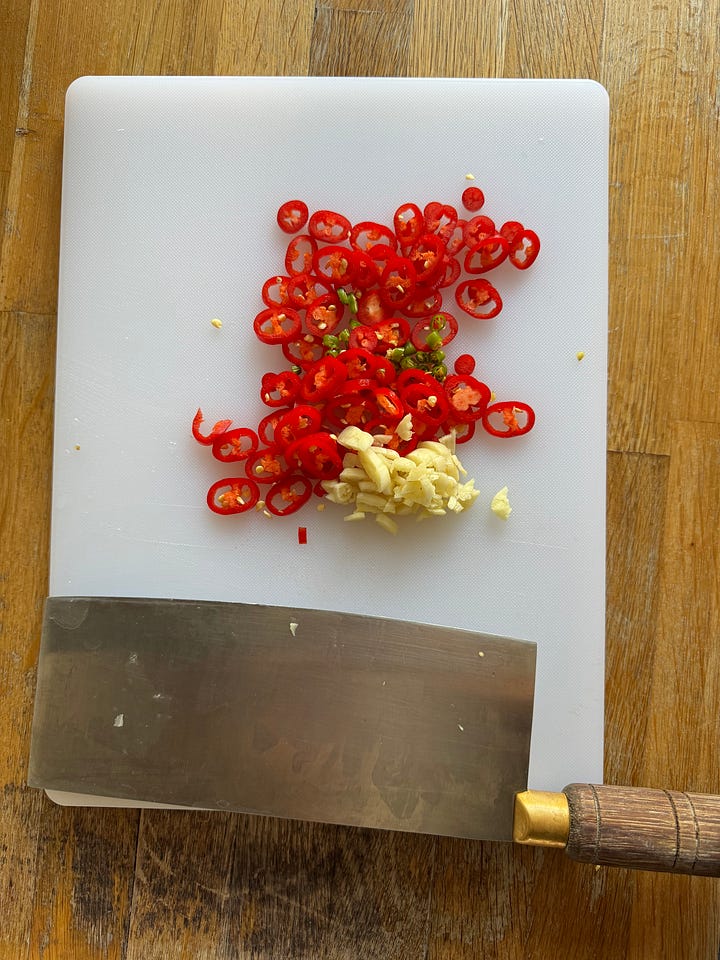
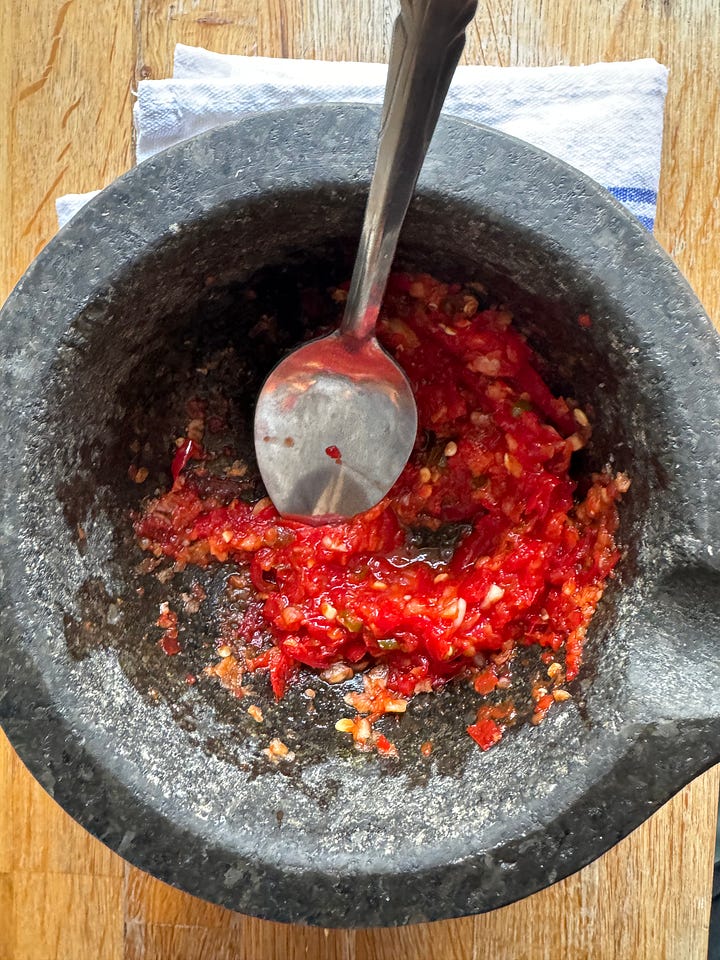
Fry your egg. I use a small wok here because its curved shape allows me to shallow fry the egg without needing to load too much oil. To explain, if I were using a wide saucepan, I'd have to use a lot of oil before it reached a reasonable height. Anything small with curved sides works well. Crack your egg into a small bowl to make adding to the wok/pan easier. Add oil to your wok/pan, heat to medium-high and drop your egg in. Cook for about 3 minutes or until cooked to your liking (e.g. runny, jammy, etc). Remove and let sit on a paper towel. Note - I find that adding enough oil so that the egg is half submerged when dropped in ensures the fried egg maintains a nice, compact circular shape.
Heat a wok to medium, add about a tablespoon of lard or oil, add chilli and garlic paste, and beans and stir fry for about a minute. Add the pork mince, turn the heat to high and stir fry for a minute or two. Note - depending on how fatty your pork mince is, you might have too much fat in the pan. If that's the case, feel free to spoon a little out, taking care to not take any chillies/garlic with you to ensure the final dish isn't too oily.
Add soy sauces and sugar and stir fry everything for another minute or two over high heat. If/when the soy sauces dry up over the heat, moisten the pan with a little splash of water—not enough to make a full-blown sauce, but just enough to give the mixture a little moisture and reduce the saltiness—a couple of tablespoons is usually fine.
Turn off the heat and add holy basil. Stir fry for a minute until leaves are wilted.
Serve on one plate with steamed jasmine rice and your fried egg. And maybe an ice cold beer.
Enjoy.





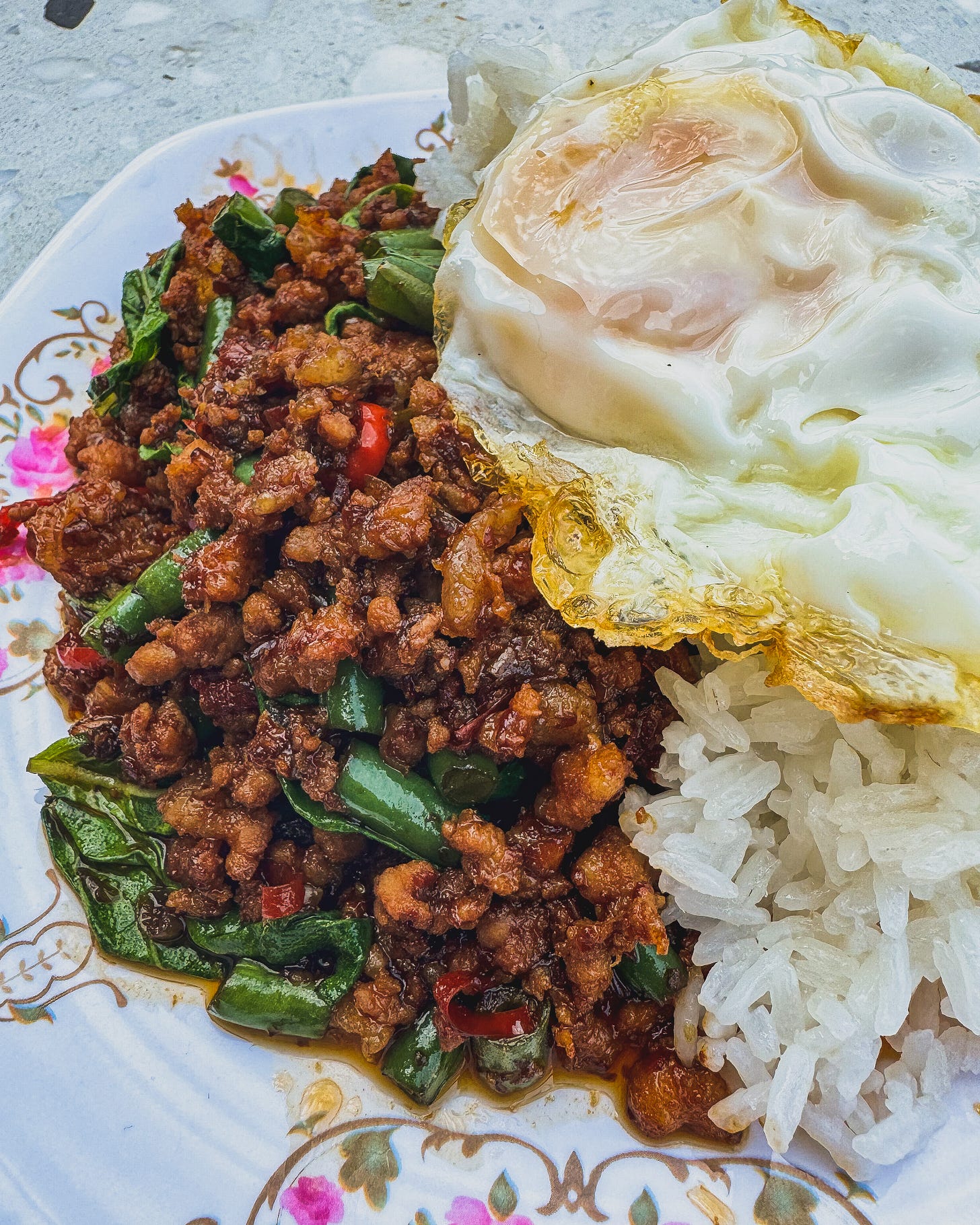
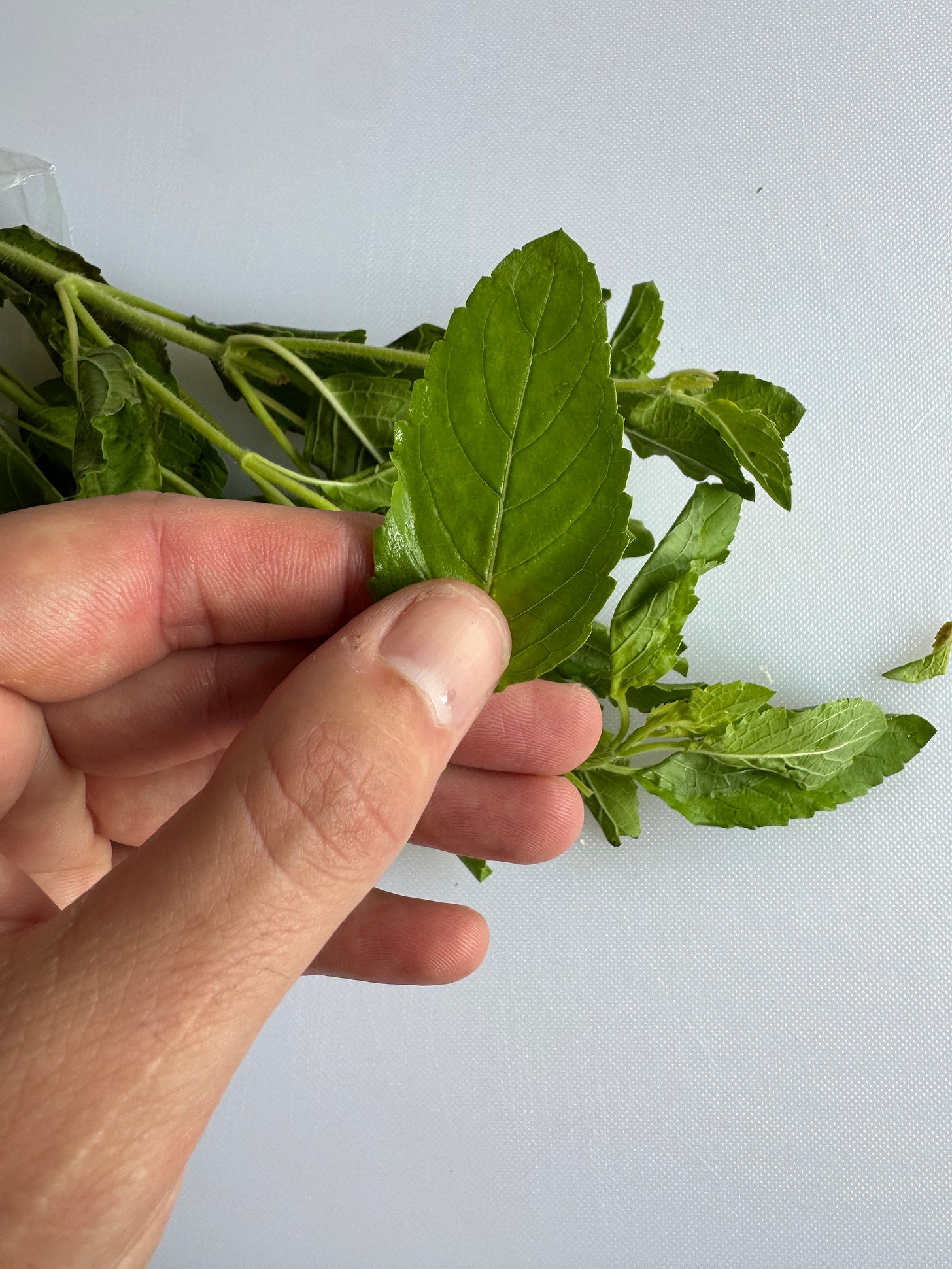
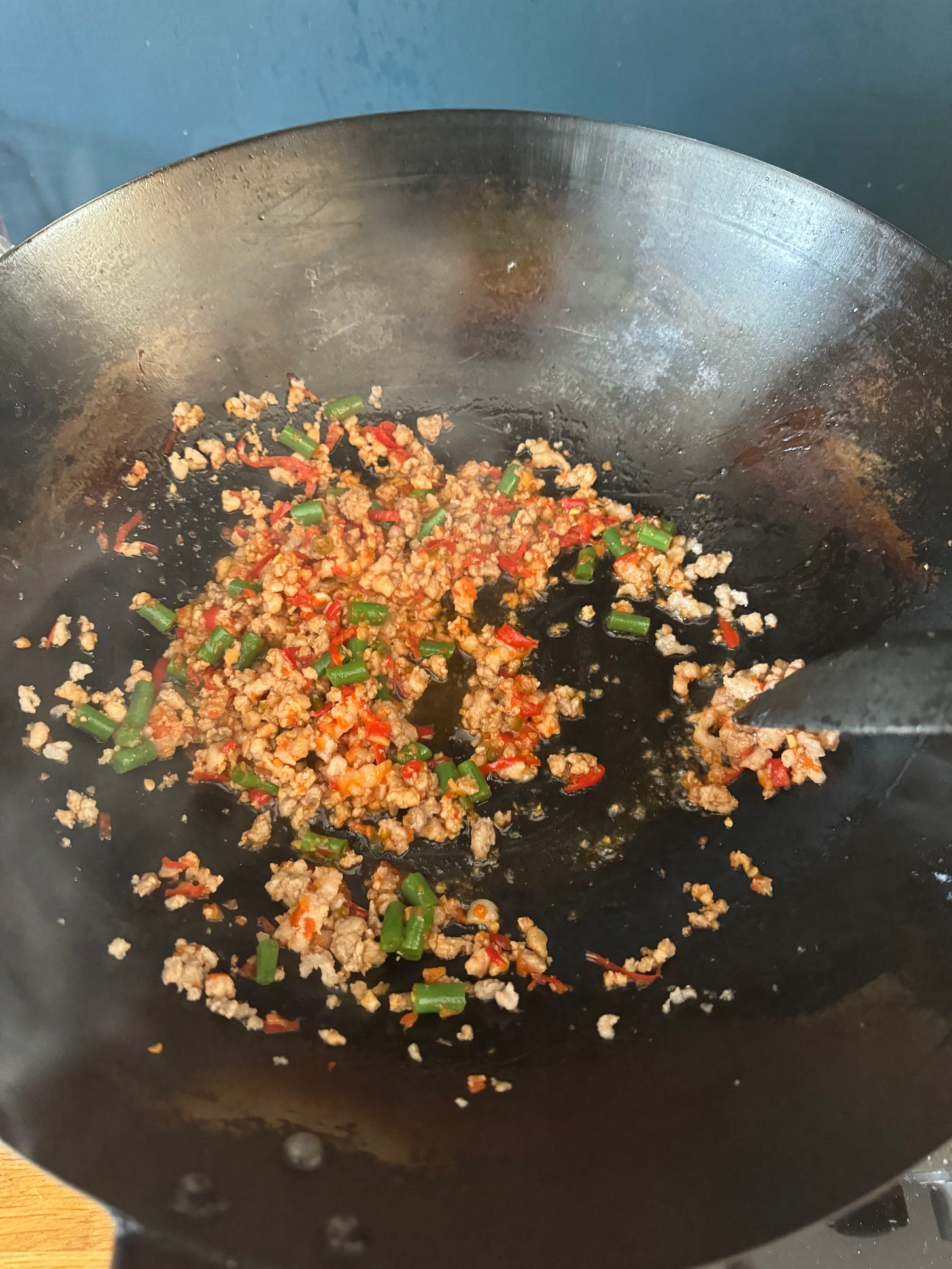

I’ve made this multiple times — although you don’t have both soy sauce options as a celiac so I can only use Tamari, and I’ve added ginger into the chilli and garlic mash up but it’s divine and become one of my weekly faves. Love your work!
Called Pannie for a reason! ❤️